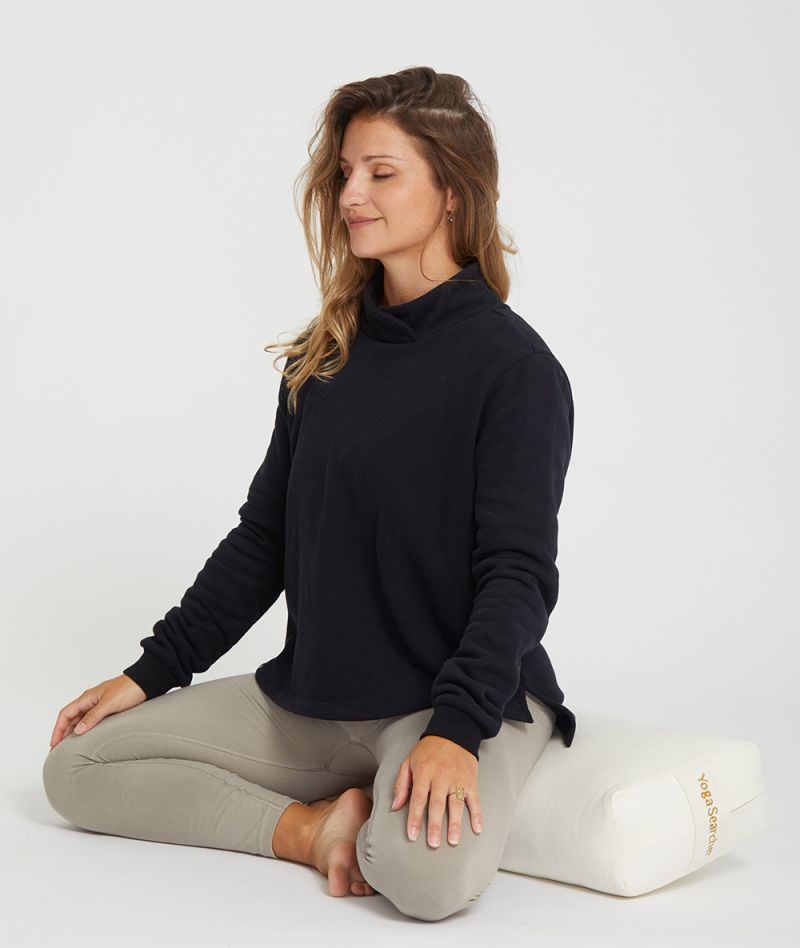Yoga Frog Pose: Complete Guide and Benefits
La frog yoga pose (Mandukasana) is a posture designed to stretch the hips, thighs and lower back. As well as its physical benefits, this posture invites you to relax and let go. In this article, we'll explore this posture in detail, its correct alignment, its benefits and how to incorporate suitable accessories such as yoga bolsters and other materials in your practice.
What is the Frog Pose?
The frog pose is often used in various yoga practices, including the vinyasa yoga and the iyengar yoga. It is particularly popular for its effectiveness in softening the hips. This posture is an excellent way of working the lower body while stimulating energy in the pelvic region.
The benefits of the Frog Pose
Practising the frog pose offers a multitude of benefits:
- Hip flexibility It helps to open up the hips, which is essential for avoiding injury and improving overall flexibility.
- Leg Strengthening By holding this position, you engage the leg muscles, which contributes to muscle tone.
- Improving traffic flow Opening up the hips improves blood circulation in the lower body.
- Stress Relief This posture relaxes the body, helping to reduce stress and anxiety.
Correct alignment of the Frog Pose
Before diving into the practice of the frog pose, it is important to understand how to maintain good alignment:
- Start position Start on all fours, with your hands under your shoulders and your knees under your hips.
- Hip opening Slowly spread your knees while keeping your feet in contact with the floor. Your legs should be far enough apart for you to feel a comfortable stretch.
- Back alignment Keep your back straight and avoid slouching. Use your hands for support if necessary.
- Breathing Breathe deeply, allowing your body to relax more with each exhalation.
Using the right equipment for the Frog Pose
To make the frog pose more accessible and comfortable, even for beginners, we recommend using yoga accessories :
- Bolsters A yoga bolster can be placed under the stomach for extra support.
- Upholsterers A pink yoga mat can provide a comfortable, non-slip surface for this position.
- Straps Straps can also be used to help stretch the legs further without straining them.
Integrating the Frog Pose into Your Practice
The frog pose can be incorporated into a variety of yoga sequences. Here are a few ideas:
- Warm-up Use the frog pose after poses such as cat and cow to prepare the hips.
- Chaining with other postures Follow this posture with poses such as pigeon or child to deepen the stretching of the hips.
- Final Relaxation Finish your practice with a few minutes in frog pose to enjoy the relaxing effects.
Anatomical considerations
Understandingyoga anatomy is essential for practising the frog pose safely. Here are a few points to bear in mind:
- Hip joints Be aware of the mobility of your hips. Don't force your hips open if you feel pain.
- Spinal column alignment Keep your spine in a neutral position to avoid straining your lower back.
- Concentration on Breathing Use the breath to deepen the stretch and calm the nervous system.
Practising the Frog Pose During Pregnancy
For women who practice prenatal yoga onlineThe frog posture can be beneficial, but it is essential to approach it with care:
- Consult a Professional Before practising, talk to your doctor or yoga instructor about any changes to your routine.
- Using Accessories The yoga bolsters and other supports can provide essential support for greater comfort.
Conclusion
La frog yoga pose is an excellent pose for opening the hips, strengthening the legs and calming the mind. By incorporating the appropriate accessories such as a yoga gym bag to carry your equipment and by being aware of your anatomical alignment, you can enrich your yoga practice. Feel free to explore different styles, including iyengar yoga material or pilates accessories, to diversify your sessions.
To find out more aboutYoga equipmentvisit our pages on yoga accessories and discover the best options for improving your practice.






